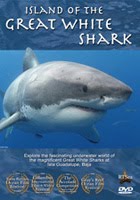 In California, many people involved in ocean conservation are familiar with the ground-breaking work of Dr. Barbara Block and the program she started, TOPP (Tagging of Pacific Predators). Using various types of telemetry and satellite tags, the TOPP crew has tagged a variety of ocean animals, from sharks to tuna, to turtles and more. Doing so has enabled them to determine many of the key migration routes these predators take - quite often of a seasonal nature, traveling great distances back and forth between key locations year after year.
In California, many people involved in ocean conservation are familiar with the ground-breaking work of Dr. Barbara Block and the program she started, TOPP (Tagging of Pacific Predators). Using various types of telemetry and satellite tags, the TOPP crew has tagged a variety of ocean animals, from sharks to tuna, to turtles and more. Doing so has enabled them to determine many of the key migration routes these predators take - quite often of a seasonal nature, traveling great distances back and forth between key locations year after year.After 10 years of tracking using over 4,000 tags and accumulating data from over 23 different species, TOPP has released a final report of its findings in conjunction with the Census for Marine Life, published online in Nature. The report shows that migration patterns play a very crucial role in the lives of many ocean predators. Writing in the Washington Post, Julie Eilperin repeated TOPP's description of the eastern Pacific Ocean as being akin to Africa’s Serengeti, teeming with wildlife and crisscrossed by migration corridors used by sharks and seabirds. Two currents play a key role in the migrations: the California Current - which stretches from western Canada all the way south to Mexico - and the North Pacific Transition Zone - which travels east and west between the sub-arctic and subtropical waters.
 Because of my interests with great white sharks in California and Mexico, I have watched the TOPP data over the years and was fascinated by the migration patterns taken by the sharks, seeing the same sharks return to locations like Isla Guadalupe, Baja year after year after year. You could predict with near certainty when sharks would be reported along the California coast based solely on the time of year and where that coincided with their migrations.
Because of my interests with great white sharks in California and Mexico, I have watched the TOPP data over the years and was fascinated by the migration patterns taken by the sharks, seeing the same sharks return to locations like Isla Guadalupe, Baja year after year after year. You could predict with near certainty when sharks would be reported along the California coast based solely on the time of year and where that coincided with their migrations.“Just off the West Coast may be one of the greatest hot spots for open ocean predators in the world,” said Dr. Block. “They have their favorite haunts, they clearly have the places they keep going back to. The upwelling [of nutrients] is so intense there in the springtime it really sets the table for the whales, the tuna and the sharks. They come and lunch at that table, from everywhere in the entire Pacific realm.”
The data collected in the TOPP program consisted of more than just the whereabouts of an animal. Water conditions including temperature, salinity, chlorophyll, and more enable researchers to examine the environments that might help to explain the migration patterns more thoroughly.
“It’s precedent-setting. It’s a tremendous tool for conservation and management,” said Jesse Ausubel, vice president of the Alfred P. Sloan Foundation and co-founder of the Census of Marine Life. “We were literally blind. We can now see. We know what’s underneath now.”
Read Julie Eilperins' article in the Washington Post.
Learn more at the TOPP website.
Migration Maps: TOPP.

















No comments:
Post a Comment